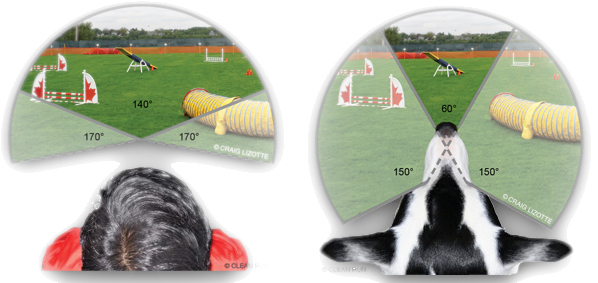Lately, a research has revealed that many animals, including cats, dogs and some other mammals has the ability to see things that are not visible to human eyes. Biologists at City University and University College in the U.K, Ron Douglas and Glen Jeffery say that the secret that empowers these animals to view things is their ability to detect ultraviolet light.
For the study, researchers collected eyes of different mammals that were donated by slaughterhouse, veterinarians, zoo and labs, which was killed or died naturally. The researchers then examined the eyes of different animals to find the amount of light that passes through the lens and reached retina.
Humans are not equipped with UV vision to see things that reflect ultraviolet wavelength and therefore cannot see many things that lies in front of them. But things that reflect UV can be viewed by animals, such as urine track, an arrangement on flowers that indicates the presence of nectar and reindeer could locate polar bears in the snow, as snow unlike white fur, reflect the UV light.
Researcher Douglas discovered that invertebrates such as bees, fish, amphibians, reptiles, rodents, bats, hedgehogs, ferrets and okapis are all equipped to detect considerable levels of UV light. However, until now it was believed that most of the mammals had lenses similar to that of humans that blocked UV entering the retina and also lacked visual pigments that are sensitive to UV and therefore could not see in ultraviolet light.
The visual pigments are the one, which absorbs the light and converts them into electric signal that are transmitted by the nerve cells. These nerve signals reach the brain to form the visuals. But lately it was found, that these pigments are not required for UV and instead in many mammals, a part of the eye known as ocular media plays the role of transmitting UV light and thus allowing more light to reach the retina.
Animals who posses eye that are not sensitive to UV wavelength are still manage to absorb light. Surprisingly, some humans can see in some UV light, who went under a cataract surgery and whose eye lenses has been removed.
Ultraviolet light hurt human eyes and prolong exposure can damage the retina adversely, just as it damages the skin upon long exposure. Therefore skiers wear goggles that block UV light as snow reflect almost 90 percent of the UV rays. The question that arises here is that why the UV light does not cause any harm to the eyes of the animals?
The human eye reflects UV light to enhance visual clarity, to comprehend things in details. The human eyes laced with large quantity of color sensitive cells, also known as cones, that are designed to produce images with high quality and in return requires a very small amount of light to enter in the retina. Whereas animals that are able to see in the dark and hence have eyes that allow maximum possible light including UV to reach the retina, though it may not be playing any special role. Moreover, such eyes produce blurred images, unlike ours. And maybe it is good for humans to not have the UV vision, because we have a detailed view of the environment than the blurred images that many UV sensitive animals have.
Image Credit: veterinaryvision.com





[…] […]